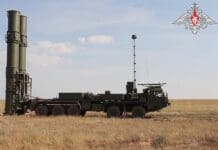This post is also available in:
 עברית (Hebrew)
עברית (Hebrew)
Following the mass shooting at an elementary school in Uvalde, Texas, and mainly the weak response by police who didn’t move in to kill the suspect for more than an hour, various ideas were floated as to how to cope with a mass-shooter incident were suggested publicly.
The shooter killed 19 students and two teachers during the incident on May 24.
One of the solutions to protect schools and other mass shooting targets was offered by Axon, the developer of the Taser electroshock weapon. The company announced it was working to build drones armed with the electric stunning weapons that could fly in schools and “help prevent the next Uvalde, Sandy Hook, or Columbine.” A photo provided by the company depicted a conceptual design through a computer-generated rendering of the taser drone.
The integration of two advanced technologies, non-lethal energy weapons and unmanned aerial vehicles may effectively combat mass shootings, the company’s CEO Rick Smith explained. “.. In brief, non-lethal drones can be installed in schools and other venues and play the same role that sprinklers and other fire suppression tools do for firefighters: Preventing a catastrophic event, or at least mitigating its worst effects.”
However, after a majority of Axon’s ethics board resigned over the controversial project, the company halted the plans. The board had voted 8-4 a few weeks ago to recommend Axon not proceed with a pilot of the Taser drone and had concerns about introducing weaponizing drones in over-policed communities of color.
Smith said the company’s announcement last week — which drew the rebuke from its artificial intelligence ethics board — was intended to “initiate a conversation on this as a potential solution.”
In an interview with the Associated Press, Smith said that he felt compelled to make the idea public after the Uvalde mass shooting. The ensuing discussion “provided us with a deeper appreciation of the complex and important considerations” around the issue, according to npr.org.


























